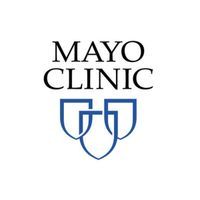
Adjusting Epilepsy Care During the COVID-19 Pandemic

The director of pediatric epilepsy and professor of neurology at Mayo Clinic detailed how care for patients with epilepsy has changed during the COVID-19 pandemic.
Elaine Wirrell, MD
Although it is known that people with compromised immune systems are at an increased risk for worsened severity of COVID-19, data for the effects of the disease on patients with epilepsy have been relatively limited to this point.
Additionally, clinicians have been adjusting their practice amid this public health crisis, transitioning to more telemedicine tactics and virtual treatment strategies. Elaine Wirrell, MD, director, pediatric epilepsy, and professor of neurology, Mayo Clinic Rochester, has been among those clinicians who understands the importance of transitioning to telemedicine, but knows the limitations that come with it.
In an interview with NeurologyLive, Wirrell discusses the change in care for patients with epilepsy, as well as the importance of and limitations with telemedicine. She also harps on the importance of seeking hospital level care for patients who may need epilepsy surgery or are starting a ketogenic diet.
NeurologyLive: What have you observed so far in terms of risk for COVID-19 in patients with epilepsy and dravet syndrome specifically?
Elaine Wirrell, MD: Full disclosure, I've not seen any patients of mine who have contracted COVID-19. What I hear from my colleagues is that the risk seems to be pretty low. As far as worsening seizures, just like any viral illness, you can have worsening in seizures, but COVID-19 does not seem to be particularly higher risk for worsening seizures than any other viral illnesses.
Have the symptoms of COVID-19 been relatively consistent from what you've heard in patients with neurologic disorders, or have you seen any differences in patients with epilepsy who have contracted the virus?
While I have not seen anyone who has contracted the virus, I think there’s limited data to go off of, especially in children who are medically fragile. In addition to seizure, many of our pediatric patients have significant developmental concerns and motor delays, which are probably going to put them at higher risk of developing more severe complications, particularly pneumonia. Many of these kids already have a high risk of pneumonia anyway, especially if they are aspirating. For those with severe developmental and epileptic encephalopathies, I would be more concerned, but for the general child with epilepsy whose otherwise healthy, they are at lower or similar risk than any other child.
What role has telemedicine played in care for patients with epilepsy? How much has it accelerated?
We certainly have used telemedicine before, but nowhere near the degree that we’re using it now. Right now, I’m doing the lion’s share of all my patient contact via telemedicine, and it is going to continue to be used significantly more than in the past. It’s a lot easier for families, particularly if you have a developmentally delayed or medically fragile child and you have to travel 6 hours for a medical appointment and 6 hours back. A lot of times we can use telemedicine, and just haven’t done that in the past.
As far as consulting, it definitely is a bit more challenging because we can’t do the degree of physical examination that you often will need. Although you may temporize and see a child by telemedicine, it would be best to figure out the medication they need to be on and then bring them back after the pandemic is over and the conditions are more stable. You can do it that way, but maybe not for new consults. I would be surprised if telemedicine is the main option for those type of people because they still can’t get as good of an exam.
How has your clinical practice been affected? What are you doing to try to maintain a level of patient care that is up to your standard in such a difficult time?
Unless it has been urgent or emergent, the biggest challenge has been to get patients into the clinic or in particular, the hospital. For our center and other centers across the US, it has almost put a stop to patients who are being worked up for epilepsy surgery, or patients who are candidates for epilepsy surgery, as far as having the procedures done. It has delayed all of that. While those kids may not be emergent, they are still at risk of having frequent seizures and potentially sudden unexpected death in epilepsy. These delays come with negative effects.
For example, we have pediatric patients who are hoping to start the ketogenic diet. If you’re starting the ketogenic diet at a young age, the safest place to do that is in a hospital, which unfortunately is now being belayed. Some of the pediatric patients who we’re trying to sort out whether they are having seizures or not have not been able to capture their events on an electroencephalogram (EEG). We try to mitigate that with increased access to telemedicine, but it is incomplete, and not as good.
Are there any other ongoing concerns that people may not be aware of?
Nothing of top-level concern, people have been cautious in general. As we go forward, it is important that we understand a balance of the risk of COVID-19 versus the risk of not providing the degree of care we are accustomed to. We know that this is not going to be something that goes away next week or next month, so people will have to learn to balance those risks to ensure that you get the care. That includes those that may need surgery or are beginning their ketogenic diet. We have to be able to care for those in the safest way possible, knowing that we can’t completely mitigate the risk of COVID-19.
Transcript edited for clarity.
Newsletter
Keep your finger on the pulse of neurology—subscribe to NeurologyLive for expert interviews, new data, and breakthrough treatment updates.




















